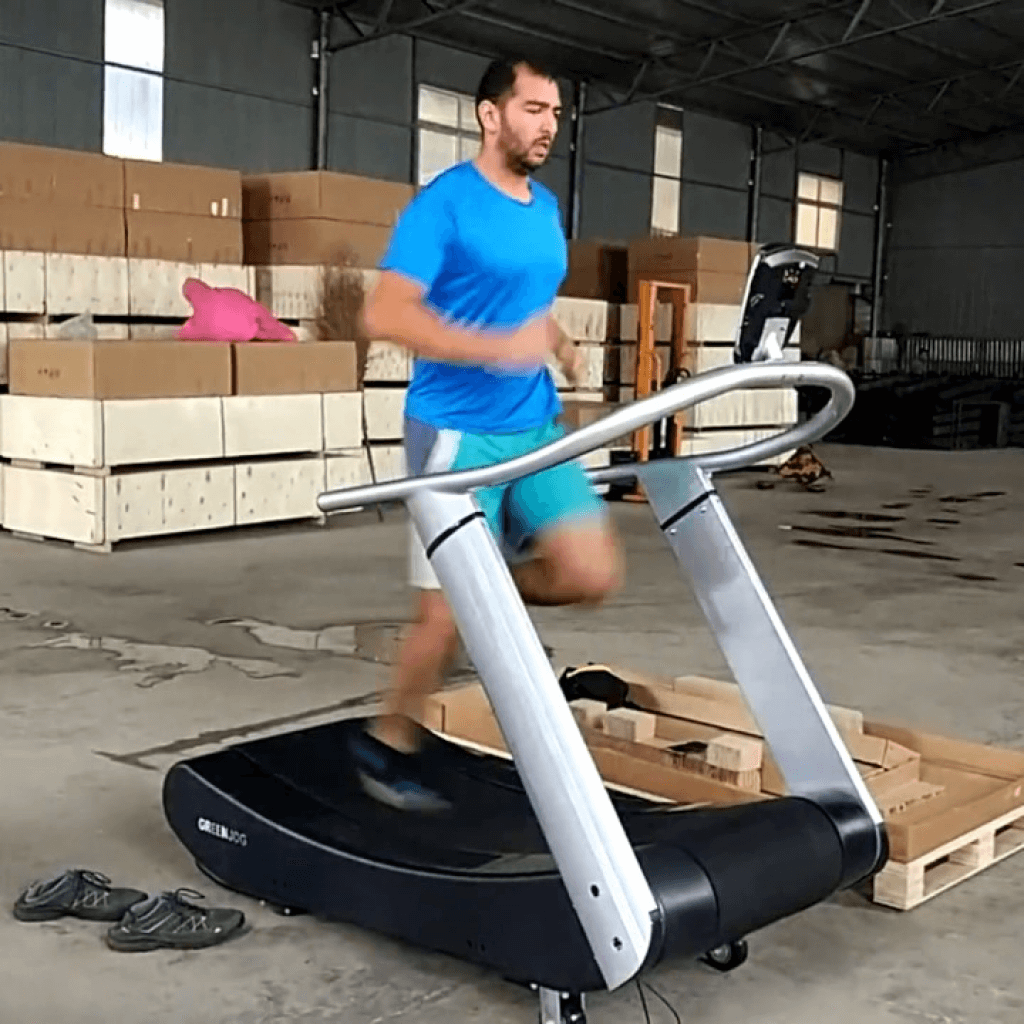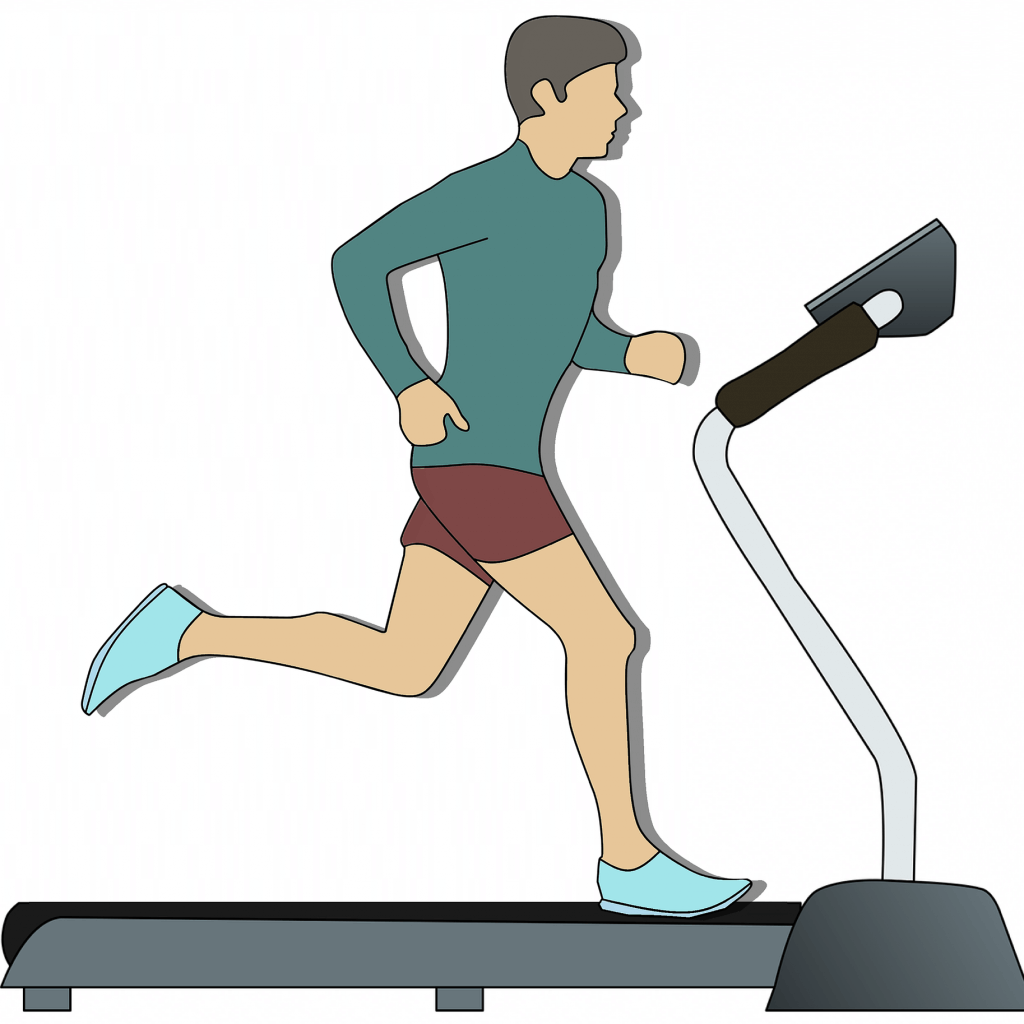Do Curve Treadmills Give You A Better Workout?

With winter fast approaching in the Northern Hemisphere, runners based in extremely cold areas are either bracing themselves for a season of frigid outdoor running or, alternatively, heading indoors for some quality time on the treadmill. And while most runners have a love-hate relationship with the “dreadmill”, it does offer a feasible alternative to skipping runs when the weather gets gnarly.

Luckily, we live in a day and age where treadmill runs needn’t be a torturous trudge on a wonky, worn-out contraption. Instead, we’re spoilt for choice with options that include virtual workout environments and hi-tech entertainment choices, to name but a few. And while these features certainly go a long way in making treadmill workouts more bearable, another, minimalist-looking treadmill has recently been making waves. Enter the curve treadmill.
What is a curve treadmill?
But what exactly is a curve treadmill and how does it differ from a normal one? In short, as the name suggests, a curve treadmill has a curved surface and is non-motorised. So, unlike a motorized treadmill, nothing can get the belt of a curve treadmill moving except your bodyweight and the friction of your feet. If you run closer to the top of the arc (i.e. the part of the treadmill where the display is located), you’ll speed it up. And if you want to slow down, simply run closer to the bottom of the curve’s arc. Easy.

Does a curve treadmill give you a better workout?
Or is it? Surely powering a treadmill with nothing but your legs require a lot of hard work, both physically and mentally? Results from a number of recently-published studies agree. Running on a curve treadmill is indeed hard work. Here’s how training on a curve treadmill may just give you the edge.
1. Curve treadmills and the physiological and perceptual demands of running
In an article published in the Journal of Science and Medicine in Sport in 2018, a team from the University of Essex looked at both the physiological and perceptual demands of running on a curved, non-motorized treadmill vs. running on a normal, motorized one. After determining their VO2max and Vmax values and allowing them to get familiar with running on a curved treadmill, 13 trained male runners were required to run for four minutes at five progressively higher velocities (40- 80% of their personal Vmax values). Each set of five runs were completed on both a curve, non-motorized treadmill and a normal, motorized one during two separate lab visits in randomized order.

And the results? On average, running on a curved, non-motorized treadmill resulted in a 32% higher oxygen uptake. Running on the curved, non-motorized treadmill furthermore resulted in a 16% higher heart rate and a 27% higher rate of perceived exertion when compared to running on a motorized treadmill. In fact, out of the 13 study participants, none were able to complete a four-minute run at 80% of Vmax.
In closing, the research team concluded that “running on the cNMT [curved, non-motorized treadmill] has higher physiological and perceptual demands”.
2. Curve treadmills and energy expenditure
Is it, therefore, safe to assume that training on a curve treadmill also burns more energy? In his master’s thesis, Nicholas Robertson from Eastern Washington University looked at exactly this question. After a brief warm-up, each of his 12 study participants completed a 10-minute walk at 3 mph on both a curved and motorized treadmill and in randomized order. Robertson found that, on average, energy expenditure was 44% higher for participants walking on the curve treadmill when compared to the motorized one.

As a side-note, Robertson’s findings also confirmed that of the study mentioned above, in that average heart rate of participants in his study was 22% higher when walking on the curve treadmill when compared to a normal, motorized one.
So which treadmill is best?
So does this mean that you should trade in your motorized treadmill for a curve one? Not necessarily. Patrick Schoenmakers, one of the authors of the 2018 study mentioned above, considers outdoor running, running on a curved treadmill and running on a motorized treadmill to be interchangeable. And, as such, he advises runners to use whichever method works for them at any given time.
So if it’s summer and the outdoors beckon, head outside to run. And if icy sidewalks and trails force you to take your running indoors during wintertime, then do so. But don’t give the curved treadmill a skip just because it’s hard work. In the end, it may be just what you need to amp up those indoor workouts for better-than-expected results.
Sources
- , Yes, you are working harder on a curved treadmill. Scientists proved it., Online publication
- , The physiological and perceptual demands of running on a curved non-motorised treadmill: Implications for self-paced training, Scientific journal
- , What Are Manual, Curve, and Anti-Gravity Treadmills?, Online publication
- , Comparing Calorie Expenditure and Rating of Perceived Exertion between the Curve and a Motorized Treadmill, Masters thesis
Latest Articles
 Is Running on a Treadmill Easier Than Running Outside?Runners have their own preferences, whether it is treadmill running, running outside on the road, or exploring trails. So...
Is Running on a Treadmill Easier Than Running Outside?Runners have their own preferences, whether it is treadmill running, running outside on the road, or exploring trails. So... Is It OK to Use Trail Running Shoes on the Road?While trail running shoes can be used on roads, especially in situations where a runner encounters mixed terrains or pref...
Is It OK to Use Trail Running Shoes on the Road?While trail running shoes can be used on roads, especially in situations where a runner encounters mixed terrains or pref... How to Fix Sore Quads After Running?Rest, ice, gentle stretching, and over-the-counter pain relievers can help soothe sore quads after running. Also, ensure ...
How to Fix Sore Quads After Running?Rest, ice, gentle stretching, and over-the-counter pain relievers can help soothe sore quads after running. Also, ensure ... 10 Fruits With The Most Electrolytes to Replace Sports DrinksThese fruits are high in electrolytes such as potassium, magnesium, and calcium, essential for hydration, muscle function...
10 Fruits With The Most Electrolytes to Replace Sports DrinksThese fruits are high in electrolytes such as potassium, magnesium, and calcium, essential for hydration, muscle function...

